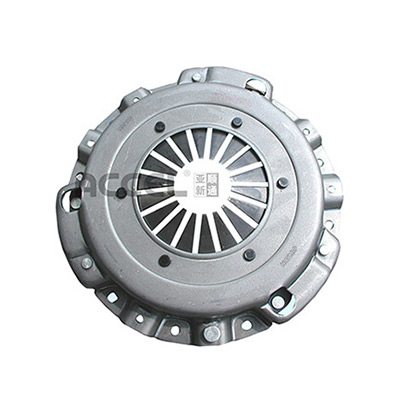- Arabic
- French
- Russian
- Spanish
- Portuguese
- Turkish
- Armenian
- English
- Albanian
- Amharic
- Azerbaijani
- Basque
- Belarusian
- Bengali
- Bosnian
- Bulgarian
- Catalan
- Cebuano
- Corsican
- Croatian
- Czech
- Danish
- Dutch
- Afrikaans
- Esperanto
- Estonian
- Finnish
- Frisian
- Galician
- Georgian
- German
- Greek
- Gujarati
- Haitian Creole
- hausa
- hawaiian
- Hebrew
- Hindi
- Miao
- Hungarian
- Icelandic
- igbo
- Indonesian
- irish
- Italian
- Japanese
- Javanese
- Kannada
- kazakh
- Khmer
- Rwandese
- Korean
- Kurdish
- Kyrgyz
- Lao
- Latin
- Latvian
- Lithuanian
- Luxembourgish
- Macedonian
- Malgashi
- Malay
- Malayalam
- Maltese
- Maori
- Marathi
- Mongolian
- Myanmar
- Nepali
- Norwegian
- Norwegian
- Occitan
- Pashto
- Persian
- Polish
- Punjabi
- Romanian
- Samoan
- Scottish Gaelic
- Serbian
- Sesotho
- Shona
- Sindhi
- Sinhala
- Slovak
- Slovenian
- Somali
- Sundanese
- Swahili
- Swedish
- Tagalog
- Tajik
- Tamil
- Tatar
- Telugu
- Thai
- Turkmen
- Ukrainian
- Urdu
- Uighur
- Uzbek
- Vietnamese
- Welsh
- Bantu
- Yiddish
- Yoruba
- Zulu
Gru . 05, 2024 19:46 Back to list
Understanding the Importance of Timing Belts in Automotive Applications and Maintenance
Understanding Rubber Timing Belts Essential Components for Engine Performance
In the world of automotive engineering, timing belts play a crucial role in the performance and longevity of an engine. Among the various types of timing belts available, rubber timing belts are particularly prevalent due to their unique properties and benefits. This article aims to delve into the significance of rubber timing belts, their functioning, maintenance, and why they are essential for vehicle performance.
A rubber timing belt is a reinforced rubber belt that synchronizes the rotation of the engine's crankshaft and camshaft. It ensures that these components move in harmony, allowing the engine's valves to open and close at the correct times during each cylinder's intake and exhaust strokes. This precise timing is critical for optimal engine performance, fuel efficiency, and reducing emissions.
One of the primary advantages of rubber timing belts is their lightweight design, which contributes to a reduction in engine weight. This is particularly important in modern vehicle designs, where every ounce plays a vital role in performance and fuel economy. Rubber timing belts are also relatively quiet compared to their metal counterparts, which can contribute to a more pleasant driving experience.
The construction of rubber timing belts typically involves a combination of synthetic rubber and fiberglass or steel cords
. This design provides strength and flexibility, enabling the belt to withstand the high levels of stress and heat generated by the engine. However, like all mechanical components, rubber timing belts are subject to wear and tear over time.The lifespan of a rubber timing belt varies depending on several factors, including the make and model of the vehicle, driving conditions, and maintenance practices. On average, most rubber timing belts should be replaced every 60,000 to 100,000 miles. Neglecting to replace a worn or damaged timing belt can lead to severe engine damage. If a timing belt breaks, it can cause the camshaft and crankshaft to become out of sync, resulting in valve collision with pistons and extensive damage to the engine.
rubber timing belt

Maintenance is key to prolonging the life of rubber timing belts. Regular inspections are essential for identifying any signs of wear, including cracks, fraying, or glazing on the surface of the belt. Additionally, it is vital to ensure that the timing belt is correctly tensioned. A belt that is too loose can slip or vibrate, while one that is too tight can lead to premature wear on the belt and related components.
When replacing a timing belt, it is often recommended to change other associated components at the same time. This may include the water pump, tensioners, and pulleys. Many mechanics advise this because if one component fails, it can negatively impact the entire timing belt system, leading to further repairs and costs down the line.
Another crucial aspect of rubber timing belts is proper installation. While it may be tempting for DIY enthusiasts to tackle a timing belt replacement, it is a complex task that requires precise alignment and tension. A professional mechanic will have the tools and expertise to ensure that the timing belt is installed correctly, which is essential for maintaining engine performance and reliability.
In terms of environmental impact, rubber timing belts made from synthetic materials can contribute to sustainability in automotive design. Manufacturers are continuously exploring options to reduce the ecological footprint of vehicle components, including the use of recycled materials in the production of rubber timing belts.
In conclusion, rubber timing belts are more than just simple components in a vehicle; they are vital for the smooth operation of engine systems. Understanding their function, maintenance requirements, and proper installation can significantly impact a vehicle's performance and reliability. Regular inspections and timely replacements are essential for preventing costly repairs and ensuring that your vehicle remains in optimal condition. As technology advances, the future may hold even more innovative materials and designs for timing belts, improving their efficiency and sustainability in the automotive industry.
-
Korean Auto Parts Timing Belt 24312-37500 For Hyundai/Kia
NewsMar.07,2025
-
7PK2300 90916-T2024 RIBBED BELT POLY V BELT PK BELT
NewsMar.07,2025
-
Chinese Auto Belt Factory 310-2M-22 For BMW/Mercedes-Benz
NewsMar.07,2025
-
Chinese Auto Belt Factory 310-2M-22 For BMW/Mercedes-Benz
NewsMar.07,2025
-
90916-02660 PK Belt 6PK1680 For Toyota
NewsMar.07,2025
-
drive belt serpentine belt
NewsMar.07,2025

